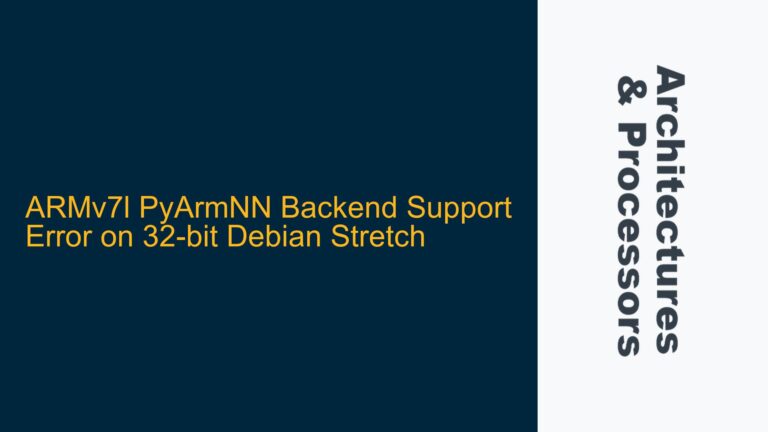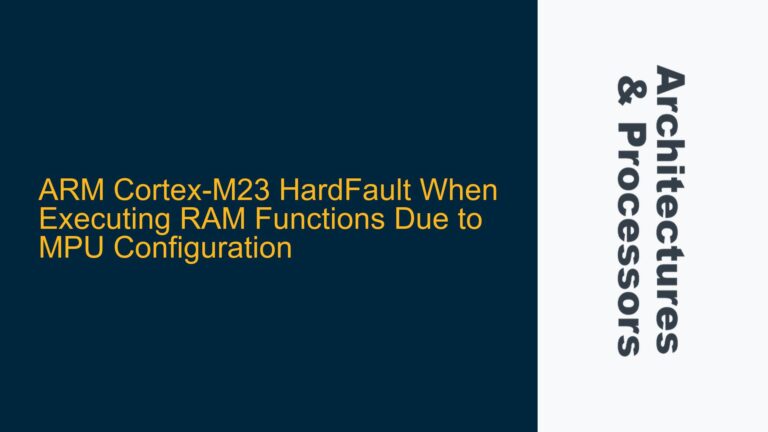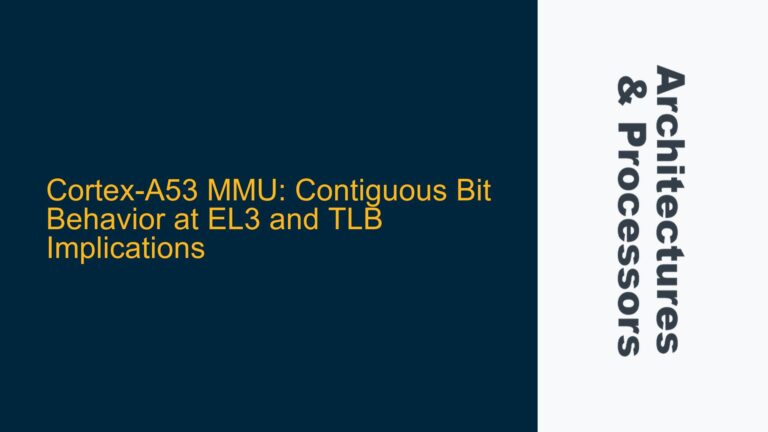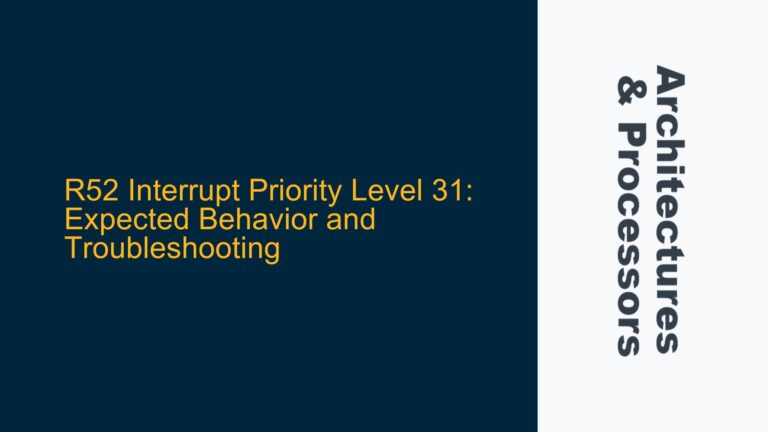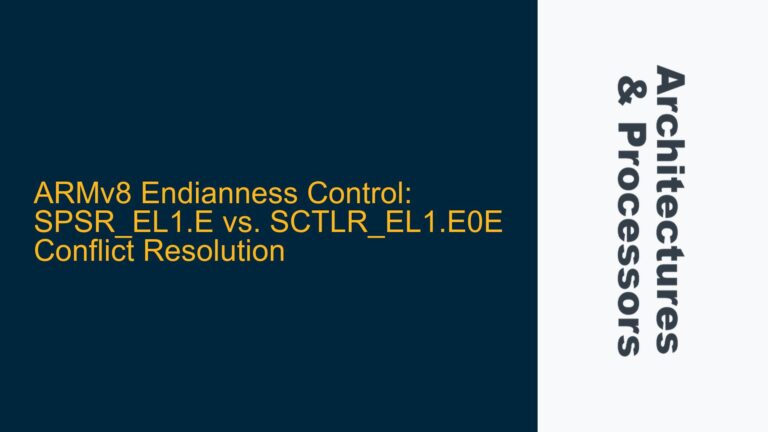AXI Slave Behavior with WR_STRB=0 and WVALID=1
The Advanced eXtensible Interface (AXI) protocol is a widely used on-chip communication standard for high-performance embedded systems. It defines a set of rules for data transfer between masters and slaves, ensuring efficient and reliable communication. One of the key signals in the AXI write data channel is WR_STRB (Write Strobe), which indicates which bytes of the write data bus are valid. When WVALID is asserted, it signifies that the write data and strobe signals are valid. However, a scenario that often raises questions is when WR_STRB is set to 0 while WVALID is 1. This situation is not explicitly detailed in the AXI specification, leading to ambiguity in how slaves should interpret such transactions.
In a typical AXI write transaction, the master initiates the transfer by asserting AWVALID and providing the address and control information on the write address channel. Once the slave acknowledges the address with AWREADY, the master proceeds to the write data channel, asserting WVALID and providing the data and WR_STRB signals. The WR_STRB signal is a bitmask that specifies which bytes of the data bus are valid. For example, in a 32-bit data bus, a WR_STRB value of 0xF (binary 1111) indicates that all four bytes are valid, while a value of 0x3 (binary 0011) indicates that only the lower two bytes are valid.
When WR_STRB is 0, it implies that none of the bytes on the data bus are valid. This situation can occur in various scenarios, such as when a master is resizing data or performing partial writes. The AXI specification does not explicitly prohibit this condition, but it also does not provide clear guidance on how slaves should handle it. This ambiguity can lead to implementation-specific behavior, where some slaves may ignore the data entirely, while others may treat it as a valid transaction with no data update.
The core issue lies in the interpretation of WR_STRB=0 when WVALID=1. Should the slave treat this as a valid transaction and update its internal state accordingly, or should it ignore the transaction entirely? The answer depends on the specific implementation of the slave and the intended behavior of the system. However, the AXI protocol does provide some clues. According to the protocol, any transfer with WVALID=1 and WR_STRB=0 should still be counted as one of the transfers indicated by the AWLEN signal. This means that the slave must acknowledge the transaction by asserting WREADY, but it does not need to sample or update any data.
Memory Resizing and Partial Write Scenarios Leading to WR_STRB=0
The occurrence of WR_STRB=0 when WVALID=1 is not a bug but rather a legitimate scenario that can arise during memory resizing or partial write operations. Memory resizing occurs when a master needs to write data of a different width than the slave’s memory width. For example, a master with a 64-bit data bus may need to write to a slave with a 32-bit memory width. In such cases, the master may generate multiple transactions, some of which may have WR_STRB=0 to indicate that no data is being written in that particular transaction.
Partial write operations are another common scenario where WR_STRB=0 can occur. In a partial write, the master writes only a subset of the bytes in a data word. For example, if a master needs to write only the upper 16 bits of a 32-bit word, it may set WR_STRB to 0xC (binary 1100) to indicate that only the upper two bytes are valid. However, in some cases, the master may generate a transaction with WR_STRB=0 to indicate that no bytes are being written, even though WVALID is asserted.
The AXI protocol allows for such flexibility to accommodate a wide range of use cases. However, this flexibility also places the burden on the slave to correctly interpret and handle these transactions. Slaves must be designed to recognize WR_STRB=0 as a valid condition and respond appropriately. This includes acknowledging the transaction with WREADY but not updating any data in memory. Failure to handle this condition correctly can lead to unexpected behavior, such as data corruption or incomplete writes.
In addition to memory resizing and partial writes, WR_STRB=0 can also occur in other scenarios, such as when a master is performing a dummy write or testing the slave’s response. In these cases, the master may generate a transaction with WR_STRB=0 to probe the slave’s behavior without actually writing any data. Slaves must be designed to handle such transactions gracefully, ensuring that they do not misinterpret the intent of the master.
Implementing Robust Slave Logic for WR_STRB=0 Handling
To ensure reliable operation in the presence of WR_STRB=0 when WVALID=1, slave implementations must include robust logic to handle this condition. The first step is to recognize that WR_STRB=0 is a valid condition and should not be treated as an error. The slave must still acknowledge the transaction by asserting WREADY, but it should not update any data in memory. This requires careful design of the slave’s write data handling logic to ensure that it correctly interprets the WR_STRB signal and takes appropriate action.
One approach to implementing this logic is to use a state machine that tracks the progress of the write transaction. The state machine should include states for waiting for the address, receiving the data, and acknowledging the transaction. When WR_STRB=0 is detected, the state machine should transition to a state where it acknowledges the transaction with WREADY but skips the data update step. This ensures that the slave correctly handles the transaction without modifying any data in memory.
Another important consideration is the handling of the AWLEN signal, which indicates the number of transfers in a burst. When WR_STRB=0 is encountered, the slave must still count this as one of the transfers indicated by AWLEN. This means that the slave’s logic must be designed to increment the transfer count even when no data is being written. Failure to do so can result in incorrect behavior, such as premature termination of the burst or incomplete writes.
In addition to the state machine and transfer counting logic, the slave must also ensure that it correctly handles the interaction between the write address and write data channels. The AXI protocol allows for out-of-order transactions, meaning that the write data for a particular address may arrive before or after the corresponding address. The slave must be designed to handle this out-of-order behavior, ensuring that it correctly associates the write data with the appropriate address, even when WR_STRB=0 is encountered.
To further enhance the robustness of the slave implementation, it is recommended to include error detection and reporting mechanisms. For example, the slave could include logic to detect invalid combinations of signals, such as WR_STRB=0 with non-zero data, and report these as errors. This can help identify potential issues in the master’s behavior and ensure that the slave operates correctly in all scenarios.
In conclusion, handling WR_STRB=0 when WVALID=1 in AXI slave interfaces requires careful design and implementation. Slaves must recognize this as a valid condition and respond appropriately by acknowledging the transaction without updating any data. This involves implementing robust state machines, transfer counting logic, and error detection mechanisms to ensure reliable operation in all scenarios. By following these guidelines, designers can create AXI slave interfaces that are both flexible and reliable, capable of handling a wide range of use cases and ensuring correct behavior in the presence of WR_STRB=0.

